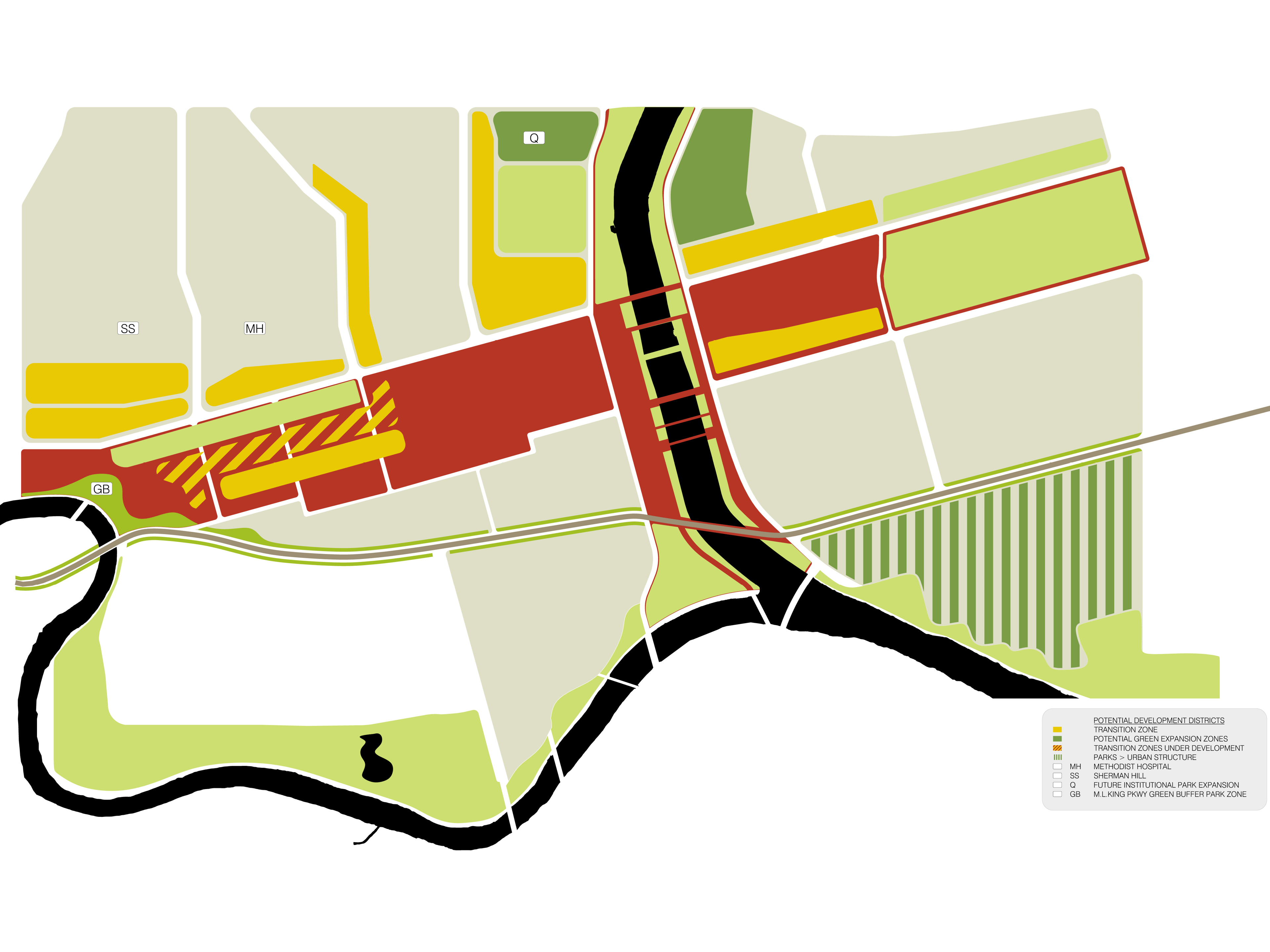Des Moines Vision Plan II
Des Moines, IA
2007

Following the completion of the Des Moines Vision Plan I, Agrest and Gandelsonas were hired to design Vision Plan II. This latest masterplan expands on the previous project, to encompass all of the downtown Des Moines neighborhoods.
The Vision Plan represents a new strategy for the theory and planning of the American city at the turn of the millennium. The Vision Plan does not establish an ‘image’ for the city seen as a still-life, rather it is a continuous process involving a partnership between the city and the business community where specific projects are developed and implemented. The traditional linear sequence of the stages of planning being followed by the implementation and financing of specific projects is abandoned for a non-linear strategy where implementation and financing are considered from the beginning, and where projects are being designed and developed along with the planning process.
The Vision Plan is a design process based on an analysis of the specific formal/aesthetic conditions of a given city which is overlapped and articulated to an analysis of the specific economic development opportunities. One of the basic premises of this urban design process is our belief that the specific conditions that characterize the American cultural, economic and political context imply the need for a radical critique of traditional urbanism. Instead of the traditional ‘Master Plan,’ the Vision Plan has developed a range of strategies from restriction to freedom, from determinate to indeterminate, from order to chaos, that focus on moments and not on a rigid plan.
(read more)
The Vision Plan represents a new strategy for the theory and planning of the American city at the turn of the millennium. The Vision Plan does not establish an ‘image’ for the city seen as a still-life, rather it is a continuous process involving a partnership between the city and the business community where specific projects are developed and implemented. The traditional linear sequence of the stages of planning being followed by the implementation and financing of specific projects is abandoned for a non-linear strategy where implementation and financing are considered from the beginning, and where projects are being designed and developed along with the planning process.
The Vision Plan is a design process based on an analysis of the specific formal/aesthetic conditions of a given city which is overlapped and articulated to an analysis of the specific economic development opportunities. One of the basic premises of this urban design process is our belief that the specific conditions that characterize the American cultural, economic and political context imply the need for a radical critique of traditional urbanism. Instead of the traditional ‘Master Plan,’ the Vision Plan has developed a range of strategies from restriction to freedom, from determinate to indeterminate, from order to chaos, that focus on moments and not on a rigid plan.